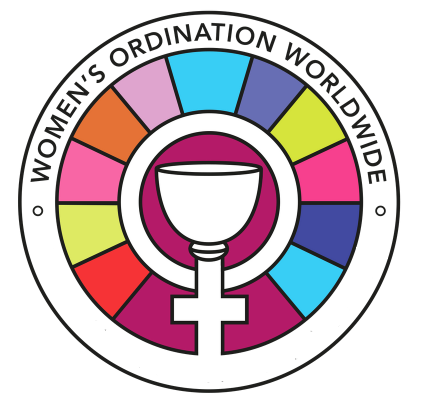Thomas Aquinas and Women's Ordination by Therese Koturbash
/Blockbuster theologian, saint and Doctor of the Roman Catholic Church, Thomas Aquinas (1225-1274) is important to the case for women's ordination.
Historically, there are three 'reasons' for exclusion of women from priesthood:
Thomas Aquinas (1225-1274) … important to know in the case for women’s ordination
women were considered to be the source of sin (Eve);
women were considered to be unclean at certain times (menstruation, child birth);
women were considered inferior to men in every way. Sidebar: Until fairly recently, even scientists held the view that women were inferior to men!
This Is Where Thomas Comes In
This is where Thomas comes in.
Thomas Aquinas was the most influential Catholic theologian of the Middle Ages. An Italian Dominican philosopher and theologian, he was a prolific writer who combined theological principles of faith with the philosophical principles of reason. He is considered an authority of the Roman Catholic Church.
During his time, women were excluded from priestly ministry. Thomas’s nature compelled him to find a justification for this. He determined that the main reason was women’s inferior nature. He based his findings on what he read in Aristotle's work which was was well known and popular in Europe at the time.
Like Aristotle, Thomas believed that only the male seed carried life. Following this assessment, he then judged that women have less intelligence than men and are weaker in character. than men.
Thomas And Women:
This caused Thomas to rationalise things like this:
In the 17th century, many researchers believed each spermatozoa contained a tiny, completely pre-formed human within it, as illustrated in this 1695 sketch by Nicolaas Hartsoeker. (Wikimedia Commons)
The active force in the male seed derives its power from the stars.
A man’s seed contains the future child or in other words, sperm contained a tiny pre-formed adult human curled up inside. Aquinas’s view was based on science of his time. This old science is not supported by modern knowledge.
Modern science says that conception involves a sperm fusing with an ovum. Without the ovum, the sperm is useless.
The Dutch scientist van Leeuwenhoek discovered sperm in 1677.
200 years passed before scientists could agreed on how humans formed. Two primary fields of thought emerged along the way:One view was held by the preformationists who believed that each spermatozoa (or each egg, depending on who you asked) contained a tiny, completely preformed human. In this theory, the egg—or sperm—simply provided a place for development to occur.
The other view was that held by epigenesists. Though epigenesists weren’t sure who contributed exactly what, they believed that both men and women contributed material to form a new organism.
Few early researchers who did study sperm fully appreciated the role of the female reproductive system in the fertility equation. This oversight could explain why this area is still such a mystery today. ‘Part of that is a male bias in biology to think the female is not an important part of the story, and that goes way back in sperm biology to this whole idea of preformation.’ [1]
In procreation, a woman’s only contribution is her womb .
The womb is like the ploughed field in which the fully potent grain seed grows. The woman’s contribution is nutrition and a little bunk for the seed to grow into a baby.
When a male child is born, the birth is perfect.
The birth of a female child is because of accident. — a damp wind was blowing on the day of conception, the semen is weak, the material in the womb is unsuitable, or because of the action of some external factor such as a wind blowing from the south.
perfect child = boy. But women are needed for procreation and to help men so even though imperfect, women still have a role.
Women are not ordered to intellectual operation. Though a woman is carnally united to a man in generation, she is not united to him in his higher faculties.
Man is in a state of perfection. Men signify eminence in human nature.
Therefore it is men who CAN represent Christ in the Eucharist. As the perfect human, man is the sacramental sign of Christ.
We want to note that Women’s Ordination Worldwide has tremendous respect for Thomas Aquinas and his scholarship. However, had he the benefit of modern science, it is unlikely he would have arrived at the conclusions about women and justifications for their exclusion from priesthood that he did.
WOW is indebted to the work of Dr. John Wijngaards, Wijngaards Institute for Catholic Research and their website, womenpriests.org. For their page on Thomas, see here: Thomas Aquinas
This page prepared for WOW by Therese Koturbash: Therese Koturbash, BA, LLB, GDCL served as Canadian Delegate to Women’s Ordination Worldwide from 2008 to 2013. For all five of those years, she was elected member of WOW's four person International Leadership Circle. She has also been the National Coordinator of Canada's Catholic Network for Women's Equality. Today, Therese serves on WOW’s Communications Team and is a volunteer with WOW member group, Wijngaards Institute for Catholic Research. Her paid work is as a family attorney.
Notes:
Poppick, Laura, ‘The Long, Winding Tale of Sperm Science …and why it’s finally headed in the right direction, Smithsonian Magazine, June 7, 2017.


